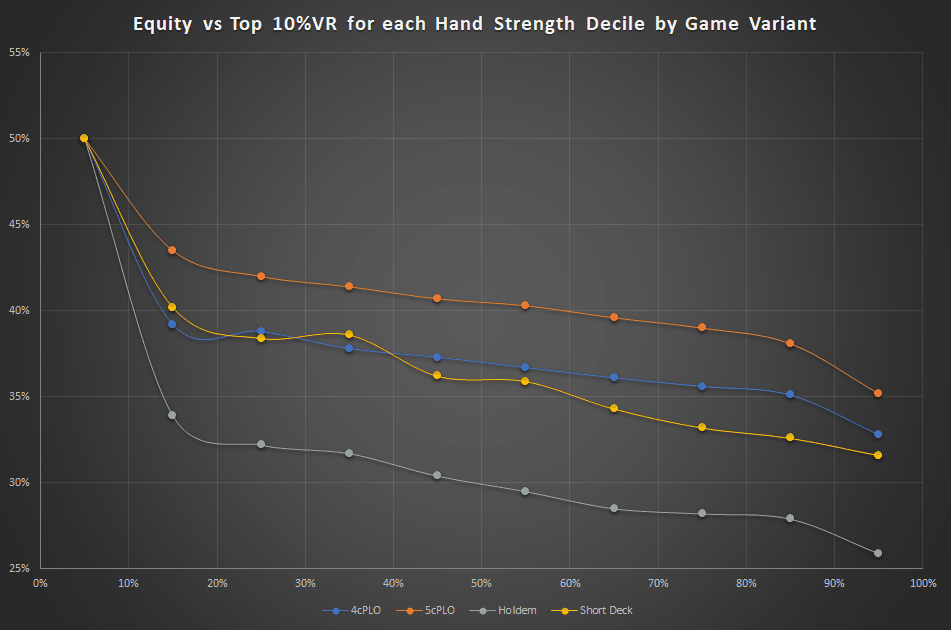tl;dr: A poker starting hand chart helps players make informed decisions about which hands to play

In the world of poker, making the right decisions at the beginning of a hand can greatly impact your chances of winning. That’s where a poker starting hand chart comes in. This valuable tool helps players determine which hands are worth playing and which ones should be folded. By understanding how to read and use a starting hand chart, you can improve your overall strategy and increase your chances of success at the poker table.
Understanding the importance of a starting hand chart

A starting hand chart is a guide that ranks poker hands based on their strength and potential to win. It provides players with a clear framework for making decisions about which hands to play and which ones to fold. By following a starting hand chart, you can avoid playing weak hands that are unlikely to lead to victory.
How to read a poker starting hand chart

To effectively use a starting hand chart, you need to understand the factors that influence hand rankings. Here are the key elements to consider:
Hand rankings
The first thing to look for on a starting hand chart is the ranking of each hand. Hands are typically ranked from strongest to weakest, with premium hands like pocket aces or kings at the top, and weaker hands like 7-2 offsuit at the bottom. Understanding the relative strength of each hand will help you make better decisions during gameplay.
Position at the table
Position is crucial in poker, and a starting hand chart takes this into account. The chart will often provide separate recommendations for different positions at the table, such as early, middle, and late positions. This is because the later you act in a hand, the more information you have about your opponents’ actions, allowing you to make more informed decisions.
Adjusting for table dynamics
Table dynamics refer to the specific characteristics of the players at your table, such as their playing style, aggression level, and skill level. A starting hand chart may suggest adjustments based on the table dynamics. For example, if you’re playing against tight and conservative players, you may want to play more hands and be more aggressive. Conversely, if you’re up against loose and aggressive players, you may want to tighten up your starting hand range.
Using a starting hand chart to make decisions
Once you understand how to read a starting hand chart, you can use it to guide your decision-making process. Here are some general guidelines for playing different types of hands:
Playing premium hands
Premium hands like pocket aces, kings, and queens are considered strong starting hands. When you have a premium hand, it’s generally a good idea to play aggressively and try to build the pot. These hands have a high chance of winning, so you want to maximize your potential earnings.
Playing speculative hands
Speculative hands, such as suited connectors or small pocket pairs, have the potential to make strong hands like straights or flushes. However, they are riskier to play and require careful consideration. When playing speculative hands, it’s important to consider your position, the table dynamics, and the potential payoff if you hit a strong hand.
Playing marginal hands
Marginal hands are those that fall in between premium and speculative hands. They have some potential to win but are not as strong as premium hands. When playing marginal hands, it’s important to consider your position and the table dynamics. It may be wise to fold these hands in early positions but play them more aggressively in late positions.
Common mistakes to avoid when using a starting hand chart

While a starting hand chart can be a valuable tool, it’s important to avoid certain pitfalls. Here are some common mistakes to watch out for:
Ignoring position
Position is a critical factor in poker, and ignoring it can lead to poor decision-making. Always consider your position at the table when using a starting hand chart. The recommendations may vary depending on whether you’re in an early, middle, or late position.
Overvaluing certain hands
It’s easy to get attached to certain hands and overvalue them. Remember that a starting hand chart provides general guidelines, but it’s not a foolproof strategy. Be willing to adjust your play based on the specific circumstances of each hand.
Not adjusting for table dynamics
Table dynamics can greatly influence the effectiveness of a starting hand chart. If you fail to consider the playing styles and tendencies of your opponents, you may miss out on opportunities or find yourself in unfavorable situations. Always be aware of the table dynamics and adjust your strategy accordingly.
Benefits of using a starting hand chart
Using a starting hand chart offers several benefits for poker players:
– Improved decision-making: A starting hand chart provides a clear framework for making decisions about which hands to play. This can help you avoid costly mistakes and make more informed choices.
– Consistency: By following a starting hand chart, you can establish a consistent approach to hand selection. This can help you avoid impulsive or emotional decisions that can lead to losses.
– Time-saving: Instead of spending time analyzing each hand individually, a starting hand chart allows you to quickly assess the strength of your hand and make a decision accordingly. This can save valuable time during gameplay.
Conclusion

A poker starting hand chart is a valuable tool that can help players make informed decisions about which hands to play. By understanding how to read and use a starting hand chart, you can improve your overall strategy and increase your chances of success at the poker table. Remember to consider hand rankings, position at the table, and table dynamics when using a starting hand chart. Avoid common mistakes and enjoy the benefits of consistent decision-making. So, next time you sit down at the poker table, consult a starting hand chart and play with confidence.
FAQ
-
What are the starting poker hands in order?
1
#1. Pocket Aces (A♠ A♥). …
2
#3. Pocket Queens (Q♠ Q♥). …
3
#5. Ace-King Suited (A♠ K♠). …
4
#7. Ace-King Offsuit (A♠ K♥). …
5
#9. Pocket Nines (9♠ 9♥). …
6
#11. King-Queen Suited (K♠ Q♠). …
7
#13. Ace-Queen Offsuit (A♠ Q. …
8
#15. King-Jack Suited (K. -
What is the best poker hand to start?
Ace-Ace. The best starting hand in Texas Hold’em poker is the Ace-Ace poker hand. Ace-Ace, also known as Pocket Rockets, Pocket Aces, American Airlines, or Bullets, can be played from every position – early, middle, and late.
-
What are profitable poker starting hands?
Poker Hands FAQs The ten best Texas Hold’em hands you should start with include Ace-Ace, King-King, Queen-Queen, Ace-King (suited), Ace-Queen (suited), Jack-Jack, King-Queen, Ace-Jack, Ace-King (offsuit), and 10-10.
Originally posted 2023-07-11 15:43:24.

